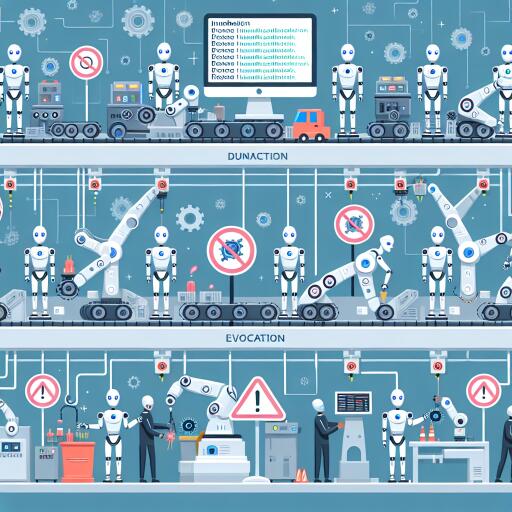Council Post: Mistakes To Avoid In Deployment Of Smart Automation In Manufacturing
In the transformative landscape of manufacturing, the application of AI-powered smart automation heralds a new era of efficiency and productivity. Spearheading these advancements, Dr. Satyandra K. Gupta, a leading figure in robotic innovations, shares invaluable insights into the deployment of smart automation in the manufacturing sector. With significant technological expertise under his belt, Dr. Gupta’s perspective illuminates the common pitfalls that organizations encounter when integrating smart automation solutions.
Understanding Robot Capabilities
One primary misstep in smart automation is the attempt to mirror manual processes with robotic solutions without adjusting for the unique capabilities of robots. Robots excel in precision, strength, and speed. An example of this is in robotic sanding, where these attributes can be leveraged to reduce costs and improve efficiency significantly, showcasing the necessity of process redesign in automation.
The Bottleneck Challenge
Focusing automation efforts on a single process step without considering the downstream effects can lead to limited benefits. If a subsequent step becomes a bottleneck or if quality levels vary significantly between manual and automated processes, the advantages of automation are diminished or nullified. Dr. Gupta emphasizes the importance of viewing the process holistically to ensure system-level optimization for maximum efficacy of automation initiatives.
The Journey of Automation
Deployment of automation is an evolutionary process rather than a one-time event. Anticipating challenges and maintaining a flexible approach are crucial components of a successful automation journey. Support from dedicated champions who believe in the transformative power of automation can guide a project through its teething problems towards realization of its full potential.
Beyond Labor Cost Savings
Calculating the return on investment (ROI) solely based on labor cost savings is a narrow approach that overlooks the comprehensive benefits of automation. Factors such as consumable savings, reduction in training and turnover costs, mitigation of worker injury risks, and preservation of process knowledge within automation software extend the value of smart automation far beyond the immediate savings on human labor.
The Human Factor in Automation
Maximizing the benefits of automation requires a skilled workforce capable of interacting effectively with new technologies. Ensuring intuitive interfaces and providing adequate training are paramount to facilitate smooth human-robot collaboration. Additionally, addressing the maintenance and servicing of automation technologies either through in-house talent or external service providers, possibly leveraging AI-based prognostics, is essential for the sustained success of automation projects.
Creating a Roadmap for Success
Dr. Gupta advocates for a holistic approach to the deployment of smart automation, emphasizing the necessity of extending the focus beyond technological implementation. Comprehensive planning that encompasses operational, business, and workforce considerations, along with stakeholder engagement, forms the backbone of a successful automation strategy. Following these guidelines can help avoid common pitfalls and fully realize the potential of smart automation in manufacturing.
In conclusion, as the manufacturing sector stands on the brink of a new era powered by smart automation, the insights provided by Dr. Gupta offer a roadmap for avoiding common mistakes. Embracing the full spectrum of considerations surrounding automation deployment can lead to significant advancements in productivity, efficiency, and overall competitiveness in the manufacturing industry.
Forbes Technology Council is an exclusive community for leading CIOs, CTOs, and technology executives.









